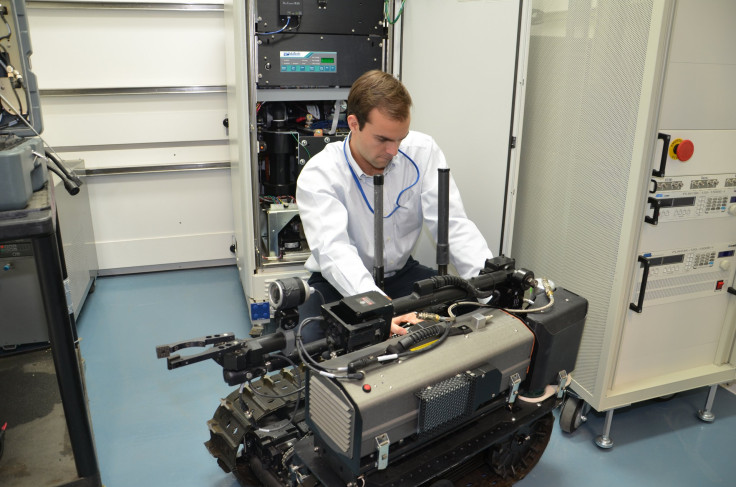General Motors (GM) Teaming Up With US Army To Advance Hydrogen Fuel Cell Technology After Announcing Similar Agreement With Honda Motors

General Motors (NYSE:GM) is teaming up with the U.S. Army’s research and development center devoted to creating the next generation of ground systems, from the latest landmine-clearing armored vehicles to modern forward operating bases to this thing, billed as the world’s toughest hybrid:
North America’s largest automaker announced Monday it has inked a new collaborative R&D agreement with Warren, Mich.-based TARDEC (the Tank Automotive Research, Development & Engineering Center) to test and develop hydrogen fuel cell technology for military and civilian use. The idea is that the two entities can pool resources and work more efficiently than each would by working independently.
The U.S. Army is pushing to develop more efficient ground systems amid an era of reduced defense spending while GM needs to make advancements to keep up with competitors – especially Toyota Motor Corp. (TYO:7203), which has made hydrogen fuel cell cars a priority – in developing clean vehicles.
“We believe hydrogen fuel cell technology holds tremendous potential to one day help reduce our dependence on petroleum and we are committed to building on our leadership through the continued development,” Charlie Freese, executive director of GM’s global fuel cell engineering activities, said ina statement announcing the deal.

In July GM partnered up with Honda Motor Co Ltd (TYO:7267) to start co-developing fuel cell systems and hydrogen storage technologies by 2020. While Toyota will be revealing a production ready hydrogen fuel cell car in Las Vegas in January, due in the market by 2015, GM holds the largest number of related patents and is building a fuel cell lab in Pontiac, Mich. TARDEC recently opened its lab in nearby Warren to continue a decade-long program to integrate fuel cells into ground vehicles and mobile power generators.
Like battery electric power sources, hydrogen fuel cell technology is not carbon neutral. But both could be completely emission free if the sources for the energy were derived from renewable sources like wind, solar and geothermal. An electric car in the Pacific Northwest, for example, operates in a carbon neutral environment because the energy that powers electric generators in the region comes from underground natural geothermal sources -- aka volcanic heat.
Hydrogen could be carbon neutral if the power used to produce hydrogen from the electrolysis of water were renewable. Germany has taken the lead in producing hydrogen from wind power, but currently most hydrogen is produced from natural gas, a cleaner fossil fuel source, but a fossil-fuel source nonetheless.
But even if hydrogen and electricity comes from fuel sources like coal and natural gas, they don’t emit particulate matter and greater use of the technology in urban centers reduces smog that causes respiratory problems.
© Copyright IBTimes 2024. All rights reserved.












